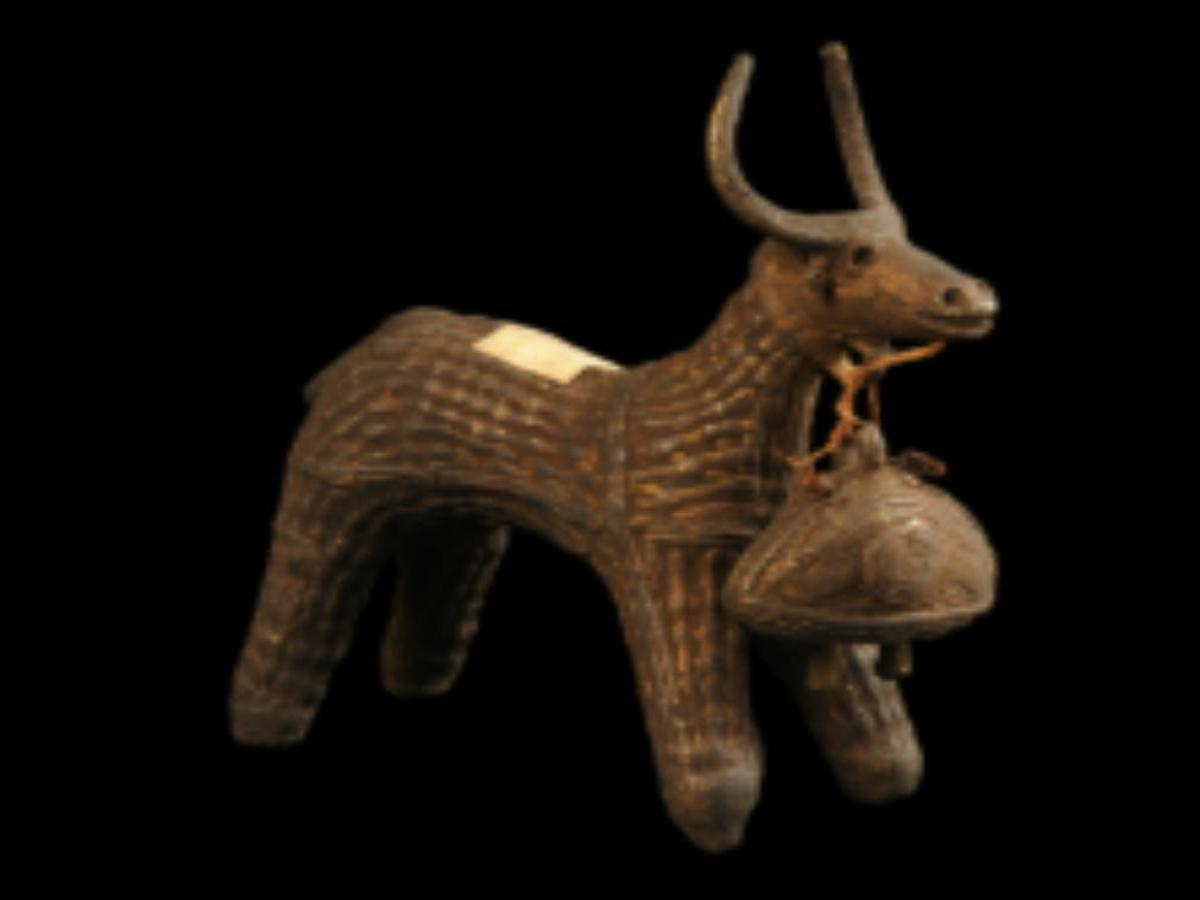State
Tribe Name
Art Type
short description
The effigy of a buffalo presents a brass statue executed in the very fine traditional technique of Dokra or lost wax. This form of tribal metal casting is said to be especially represented in Odisha, where it has been practiced since time immemorial under the able hands of skilled artisans. The effigy denotes a buffalo with two well-curved, sharply defined horns, while its body is encircled with patterns of flowing line designs formed by the sculptor in concert with well-laid-out decoration. This triangular bell fashioned with two clappers, which is suspended around the neck of the buffalo with jute thread, not only serves the purpose of decoration but also has symbolic relevance.This effigy embodies the Khonds, that is, the tribe of Odisha. It has deep cultural/metaphorical significance in their community. The effigy is ever-present in the groom's bride, being a symbol of strength, endurance, and fertility—characteristics associated with buffaloes. Giving this effigy to the bride is not simply gift-wrapping; it is a meaningful act that blesses the women with a tough and fruitful married life.
Thumbnail

Filter Postion
Left
Filter Background
Off
Theme
Filter Header Image

content
Image

description
The effigy of a buffalo presents a brass statue executed in the very fine traditional technique of Dokra or lost wax. This form of tribal metal casting is said to be especially represented in Odisha, where it has been practiced since time immemorial under the able hands of skilled artisans. The effigy denotes a buffalo with two well-curved, sharply defined horns, while its body is encircled with patterns of flowing line designs formed by the sculptor in concert with well-laid-out decoration. This triangular bell fashioned with two clappers, which is suspended around the neck of the buffalo with jute thread, not only serves the purpose of decoration but also has symbolic relevance.This effigy embodies the Khonds, that is, the tribe of Odisha. It has deep cultural/metaphorical significance in their community. The effigy is ever-present in the groom's bride, being a symbol of strength, endurance, and fertility—characteristics associated with buffaloes. Giving this effigy to the bride is not simply gift-wrapping; it is a meaningful act that blesses the women with a tough and fruitful married life.
The linking of the bell with jute is symbolic of the complementary materials used for the making of this effigy, tribal art being synonymous with natural materials. This shows the Khond's near-relationship with nature. The design is a fusion of realism and stylized tribal aesthetics, which is typical of Dokra art. Dokra objects are characterized by the individual casting of each object, which thus demonstrates the uniqueness in the creation of objects. The methodology itself has a history of over 4000 years, thereby branding it as one of the oldest surviving methods of metal casting in the world .
The linking of the bell with jute is symbolic of the complementary materials used for the making of this effigy, tribal art being synonymous with natural materials. This shows the Khond's near-relationship with nature. The design is a fusion of realism and stylized tribal aesthetics, which is typical of Dokra art. Dokra objects are characterized by the individual casting of each object, which thus demonstrates the uniqueness in the creation of objects. The methodology itself has a history of over 4000 years, thereby branding it as one of the oldest surviving methods of metal casting in the world .
Image Mode
landscape
promoted
On
Verified
Off
